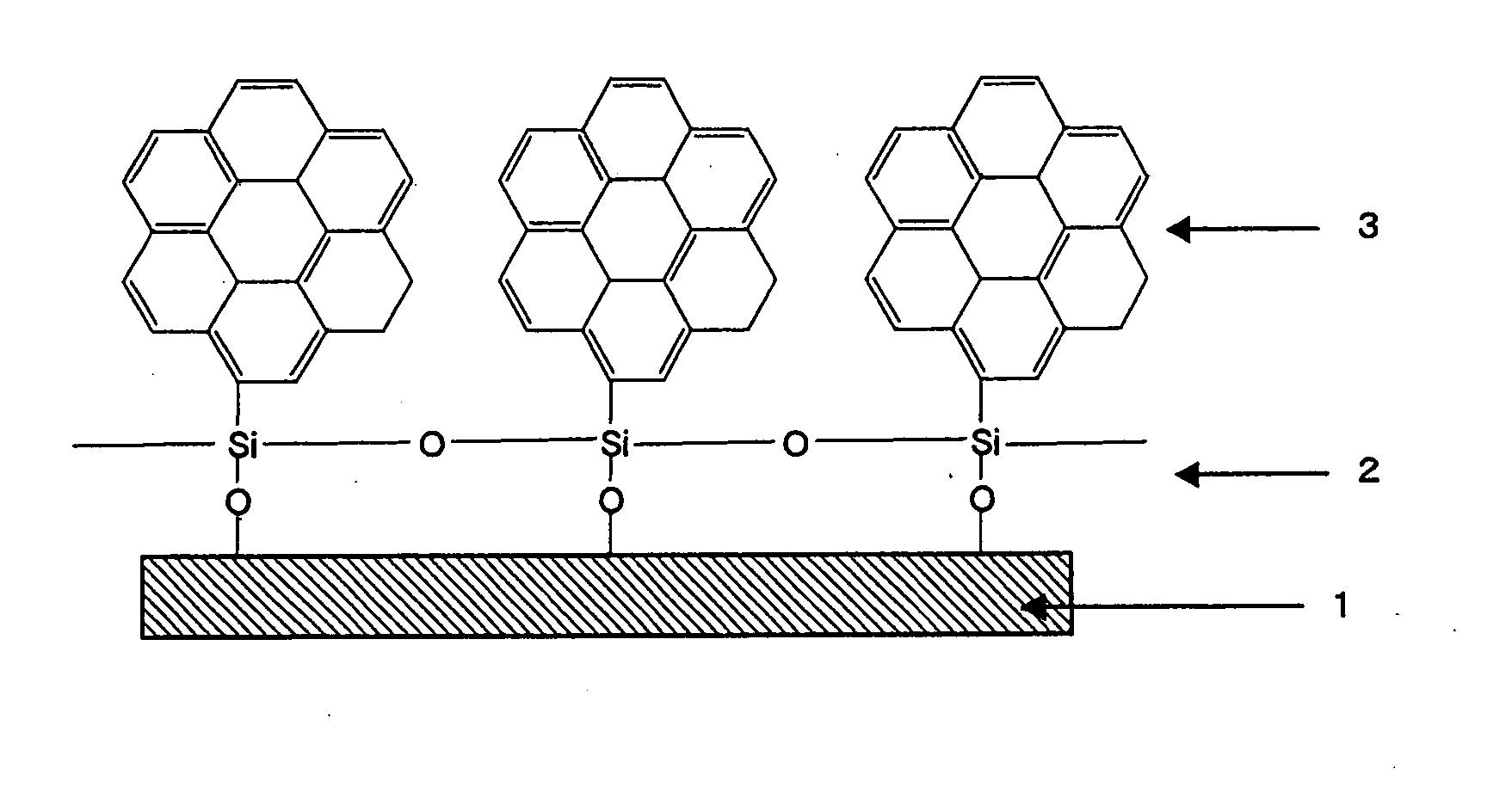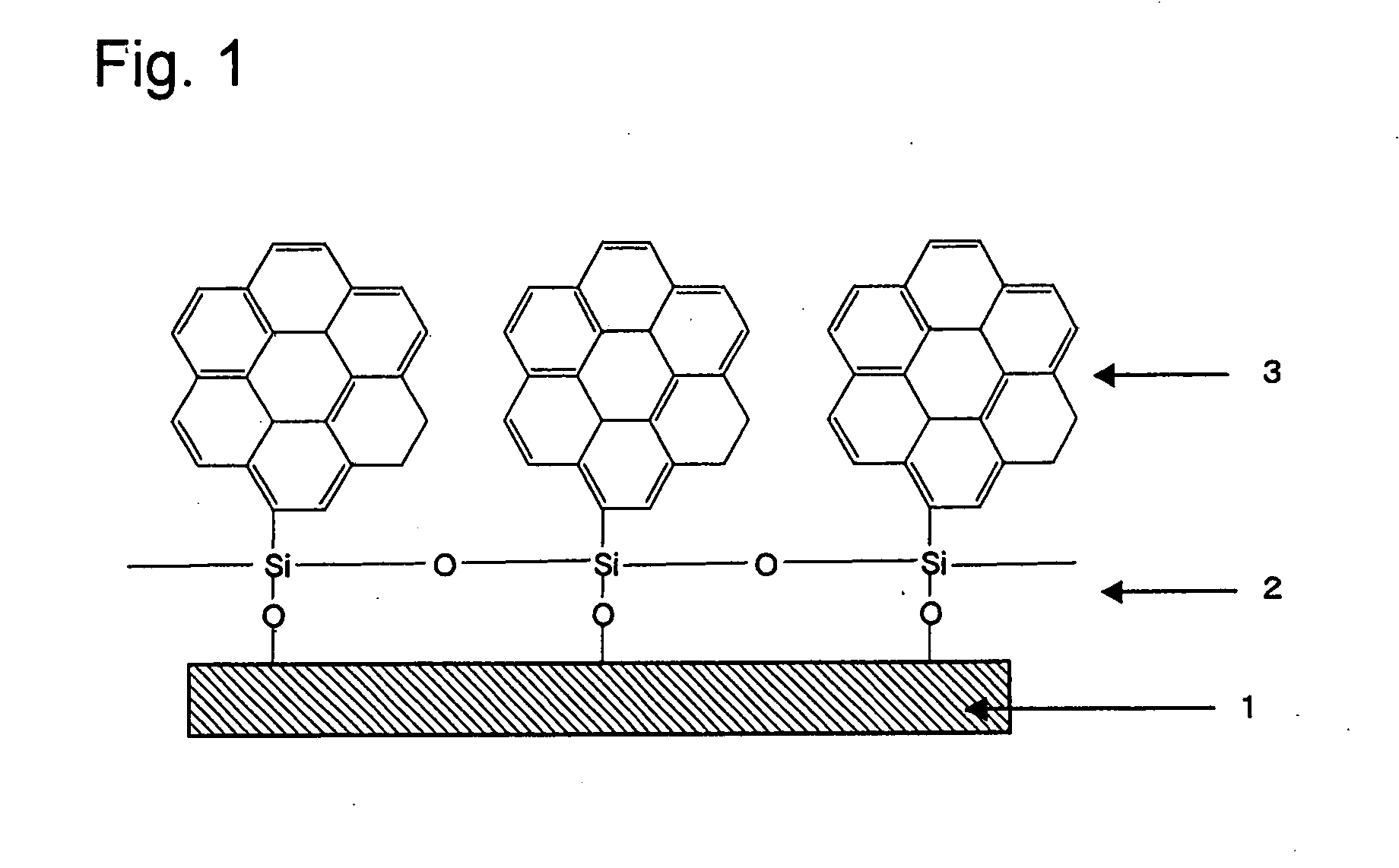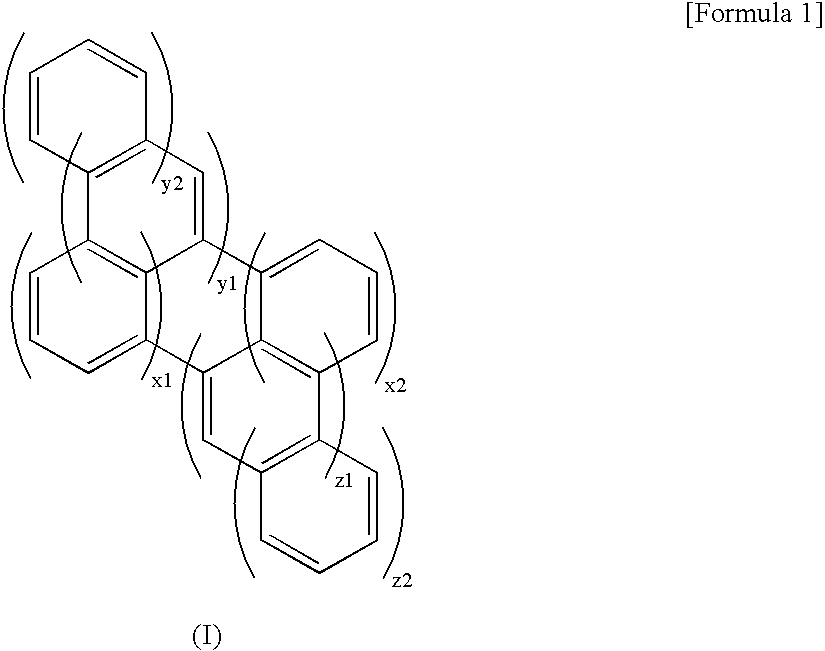Organic Silane Compound, Method of Producing the Same, and Organic Thin Film Using the Same
a technology of organic silane and compound, which is applied in the direction of organic chemistry, non-metal conductors, organic conductors, etc., can solve the problems of difficult formation of thin films in the solution process, and achieve the effects of high stabilized, effective physical exfoliation, and high crystallization
- Summary
- Abstract
- Description
- Claims
- Application Information
AI Technical Summary
Benefits of technology
Problems solved by technology
Method used
Image
Examples
example 1
Preparation of triethoxysilyldibenzoperylene
[0066]
[0067]The compound was prepared according to the synthetic route 1. Specifically, naphthalene (Sigma-Aldrich Corporation) was allowed to react in NaNO2-TfOH (Tf=CF3SO2) solution, to give binaphthyl from naphthalene. Binaphthyl was allowed to react in the presence of LiTHF under oxygen bubbling, to give perylene. SbF5 purchased from Sigma-Aldrich Corporation was diluted twice under dry argon atmosphere. SO2ClF was prepared from SO2Cl2 previously prepared in halogen exchange reaction between NH4F and TFA. Perylene was allowed to react with SbF5—SO2ClF, and the product was purified by HPLC, to give dibenzoperylene. One equivalence of NCS with respect to dibenzoperylene was allowed to react with dibenzoperylene in AcOH in the presence of CHCl3 for chlorination. The product was then allowed to react with n-BuLi and Si(OC2H5)4 in THF solution, to give triethoxylsilyldibenzoperylene (yield: 8%).
[0068]Infrared absorption analysis revealed th...
example 2
Preparation of trichlorosilylcoronene
[0079]
[0080]The compound was prepared according to the synthetic route 2. Specifically, the perylene prepared in Example 1 was anionized by mixing it with an electrophilic agent in bromoacetaldehyde diethyl acetal and treated with molecular iodine, to give 1-perylene acetaldehyde diethyl acetal and its 3-isomer. The 1- and 3-perylene acetaldehyde diethyl acetals were dissolved in conc. sulfuric acid / methanol mixed solvent and ultrasonicated for 1 hour, to give benzoperylene. Similarly, the benzoperylene obtained was anionized and treated with molecular iodine, to give 5- and 7-benzoperylene acetaldehyde diethyl acetals, and these benzoperylene derivatives were ultrasonicated and purified by recrystallization from toluene, to give coronene. One equivalence of NCS with respect to the coronene was allowed to react with coronene in the presence of CHCl3 in AcOH for chlorination. The product was then allowed to react with n-BuLi and SiCl4 in THF solut...
example 3
[0086]An organic thin film was formed by using the compound prepared in Example 2. Trichlorosilylcoronene was first dissolved in chloroform solvent, to give a sample solution at a concentration of 2 mM. Then, the sample solution was added dropwise in a certain amount (e.g., 100 μl) onto the water surface in a trough, forming an unimolecular film (L film) of the compound on the water surface. Pressure was applied on the water surface in that state to a particular surface pressure (e.g., 20 mN / m2), and the substrate was withdrawn at a constant speed, to form an organic thin film (LB film) shown in FIG. 1. The substrate was hydrophilized previously by immersing it in hydrogen peroxide / conc. sulfuric acid mixed solution.
[0087]AFM analysis of the trichlorosilylcoronene organic thin film formed showed a difference in height of approximately 2.6 nm. In addition, AFM and ED analysis showed periodic orientation of the constituent atoms on the film, indicating that an oriented organic thin fi...
PUM
| Property | Measurement | Unit |
|---|---|---|
| hydrophobic | aaaaa | aaaaa |
| band gap | aaaaa | aaaaa |
| soluble | aaaaa | aaaaa |
Abstract
Description
Claims
Application Information
 Login to View More
Login to View More - R&D
- Intellectual Property
- Life Sciences
- Materials
- Tech Scout
- Unparalleled Data Quality
- Higher Quality Content
- 60% Fewer Hallucinations
Browse by: Latest US Patents, China's latest patents, Technical Efficacy Thesaurus, Application Domain, Technology Topic, Popular Technical Reports.
© 2025 PatSnap. All rights reserved.Legal|Privacy policy|Modern Slavery Act Transparency Statement|Sitemap|About US| Contact US: help@patsnap.com



